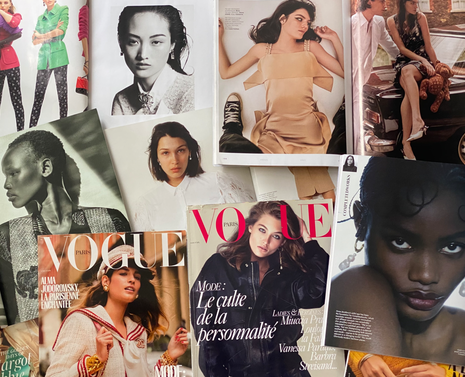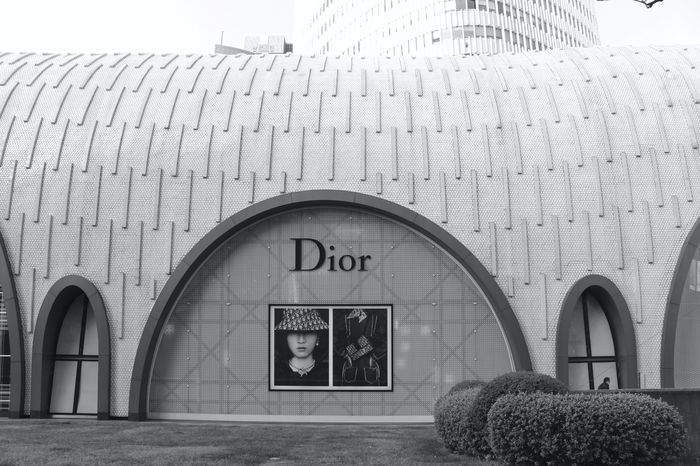Come on, Vogue!
Nafisa Mahmood delves into why fewer people are turning to American Vogue than ever before

If the infamous hook of Madonna’s hit song “Vogue” was in direct reference to the magazine, it would aptly describe just how jaded many of its readers are becoming. It is now rare for the magazine to be met with praise from any corner of the internet. This criticism lives within a digitised age of fashion commentary. A world of video essays, Twitter threads and infographics that offer digestible information regarding the intricacies of fashion and its history. This is not to rally those armed with “print-is-dead!” pitchforks, though. Be it out of undying fidelity to the act of collecting a copy of Vogue each month, or in search of the latest innovative indie magazine, we are still looking for tangible pages to peruse. Nonetheless, it is undeniable that Vogue is losing hold on its tenure as fashion’s reigning glossy pages. Most of it is their own fault.
“It is now rare for the magazine to be met with praise from any corner of the internet”
In a 2017 Vestoj interview that frenzied the industry, ex-fashion director of British Vogue, Lucinda Chambers, candidly noted the influence of advertisers at the expense of creative direction. “The June cover with Alexa Chung in a stupid Michael Kors T-shirt is crap”, she said: “He’s a big advertiser so I knew why I had to do it. I knew it was cheesy when I was doing it, and I did it anyway”. It is often suggested that the international issues are immune to the lacklustre of U.S Vogue, but this interview clarifies that the tendency to underwhelm knows no borders. Across the Vogue territories, there is lots to be desired beyond glittering editorial covers, even if it does put the grey backgrounds and dire lighting of their American counterpart to shame. A quick scan through any of Vogue’s editions reveals a sea of ads and a rarity of sartorial analysis. It seems that each issue’s only use can be found between a pair of scissors, bound to become pretty clippings in a scrapbook.
This, of course, is not limited to Vogue. But its frequent endorsement of couture as something that can only be consumed materially as opposed to being enjoyed artistically is symptomatic of the elitism that compounds the magazine and those like it. This occurs culturally too. Independent publications like The Gentlewoman are quick to boast their industry connections with cover stars like Vivienne Westwood and Agnès Varda. Ads may be scarce and musings to encourage stylistic self-exploration may be in abundance, but many popular indie fashion magazines are guilty of the same exclusivity as Vogue. They are doomed to be reporting the exact same celebrity profiles, despite being created as an alternative. They maintain close proximity to mainstream haute couture, offering little coverage of fashion innovators that do not fall within that description. This reinforces the idea that every facet of the industry must have high fashion on its radar, a socio-economic snobbery that only serves to alienate most readers.
“Vogue is probably best used as bookshelf décor”
British Vogue has done well to remedy this alienation under the helm of Edward Enninful. Having rooted itself in the avid commemoration of a multicultural Britain, there is so much power in readers being able to see themselves in content that has transcended optic insincerity in its creation. However, this cannot be said for the other editions that British Vogue shares its Condé Nast home with. Besides, many have waited far too long for the tide to turn.
Amongst them is SAKINA Magazine—a Scandinavian independent publication dedicated to honouring Muslim creatives. SAKINA is fresh and authentic where Vogue is, all too often, boring and tokenistic. Having always been an ardent collector of magazines, creative director Naima B was driven by this vision of authenticity. “I never saw myself or women that look like me,” she tells me in an online exchange: “I wanted to create a platform that was for and by us”. Naima uses her interest in design and self-publication as a means to “uncover meaningful connections and narratives” within her community. The result is a magazine that is meaningful in its circulation. In turn, she no longer reaches for the magazines she once loved.
SAKINA’s print and digital presence hopes to be “one of the many driving forces behind creating a more inclusive creative and editorial industry”. Spotlighting pioneers that are worthy of international recognition is what SAKINA prides itself on. This is a celebration without limits: their most recent issue platforms an entire host of Muslim changemakers within the fashion industry and they showcase the creative successes of Muslim women each Friday on their Instagram page. Perhaps U.S. Vogue would do better to hire photographers like Ikram Abdulkadir instead of relying so heavily on Annie Leibovitz all of the time.
There has been 130 years since Vogue’s inception and it’s never been clearer that its high society origins are still deeply woven within its fabric. Its hubristic elitism means that it continues to ignore valuable stories, but fear not, magazines like SAKINA are much more worthy homes for them. Right now, Vogue is probably best used as bookshelf décor or coffee table adornment. There’s not much of worth inside anyway.
 News / Caius mourns its tree-mendous loss23 December 2025
News / Caius mourns its tree-mendous loss23 December 2025 Comment / Yes, I’m brown – but I have more important things to say22 December 2025
Comment / Yes, I’m brown – but I have more important things to say22 December 2025 Interviews / Politics, your own way: Tilly Middlehurst on speaking out21 December 2025
Interviews / Politics, your own way: Tilly Middlehurst on speaking out21 December 2025 News / King appoints Peterhouse chaplain to Westminster Abbey22 December 2025
News / King appoints Peterhouse chaplain to Westminster Abbey22 December 2025 News / Clare Hall spent over £500k opposing busway 24 December 2025
News / Clare Hall spent over £500k opposing busway 24 December 2025









